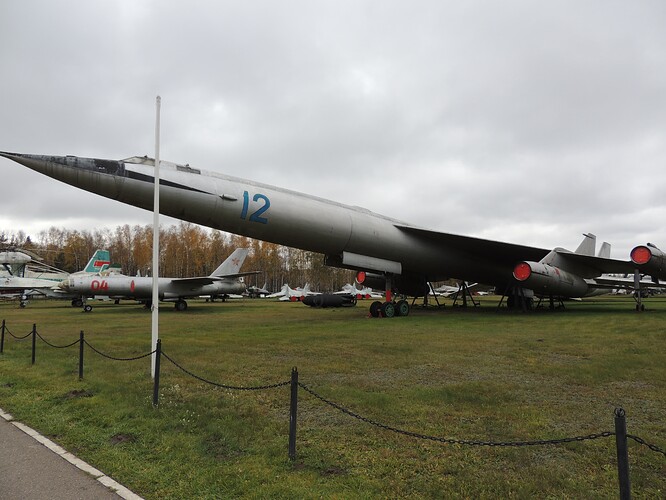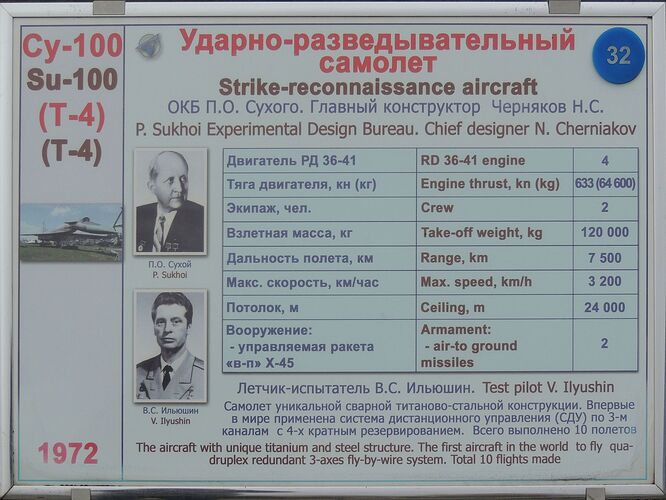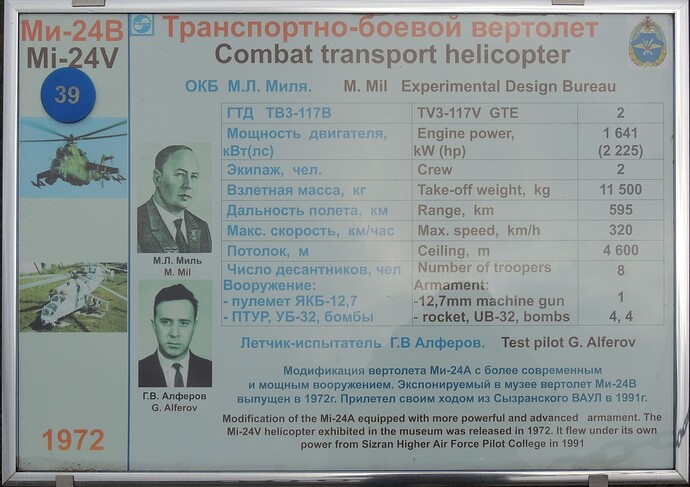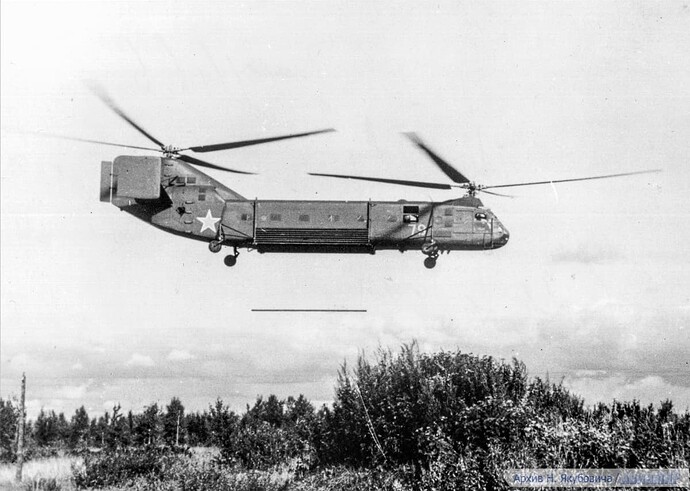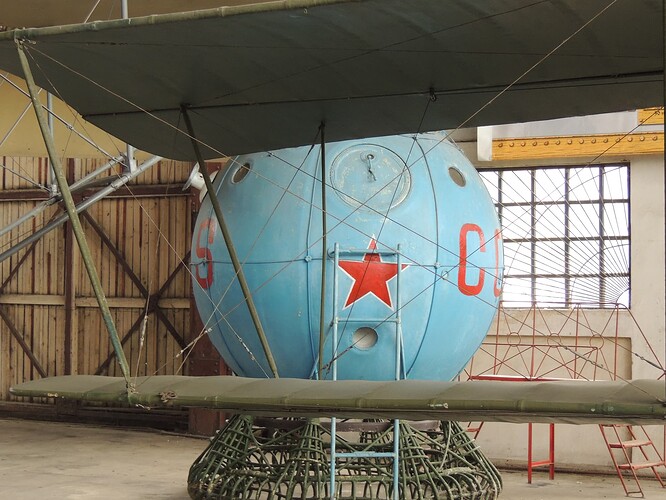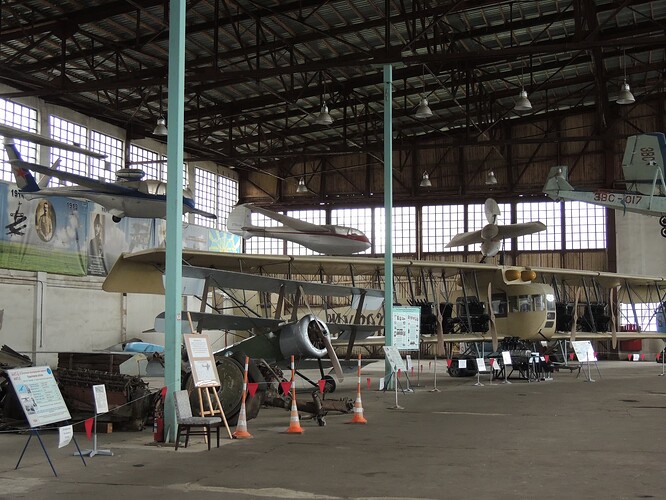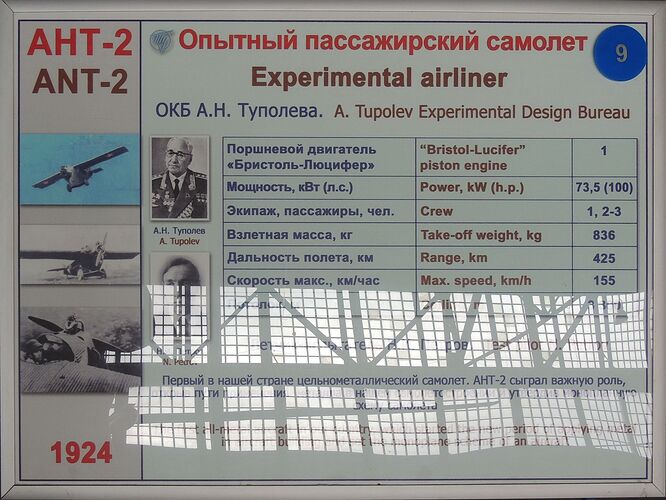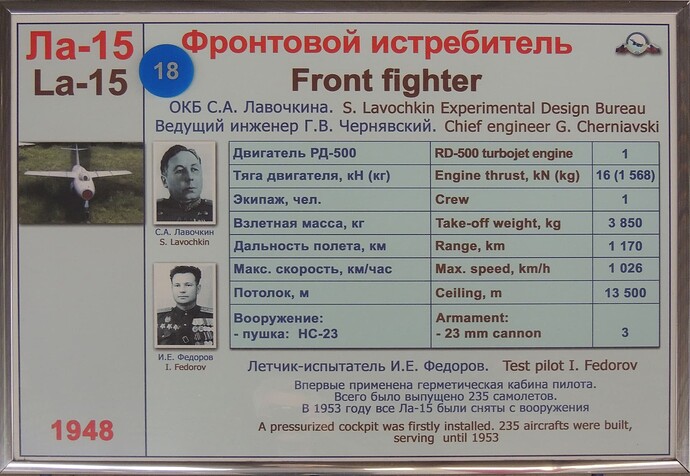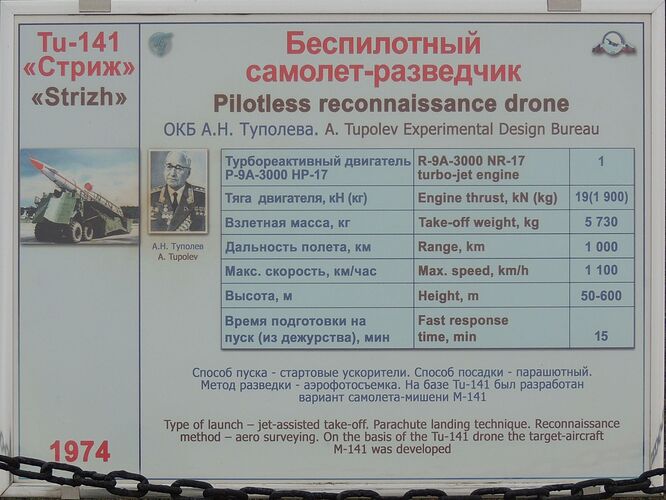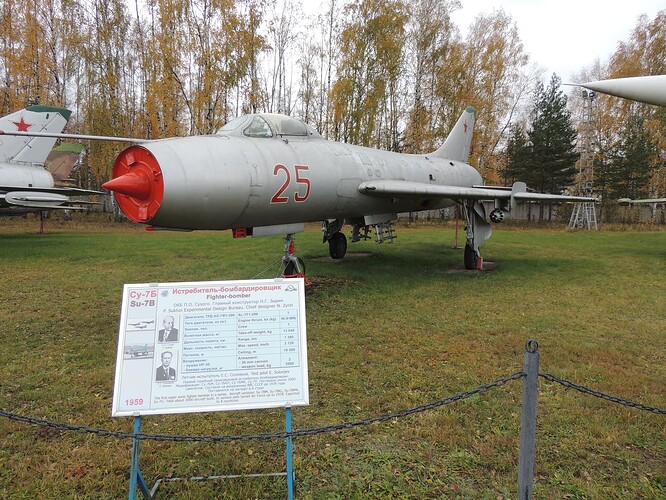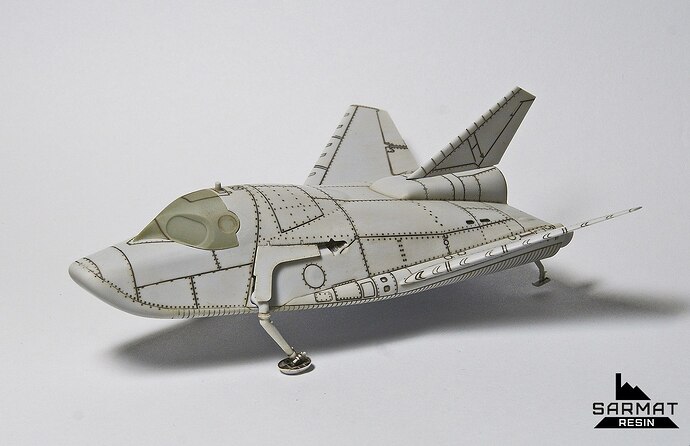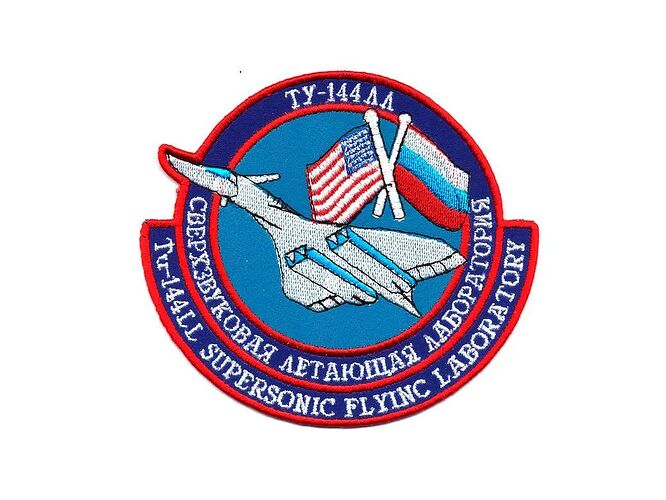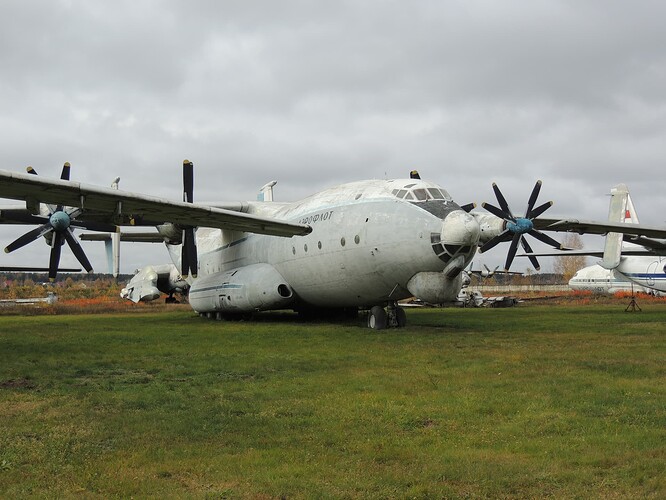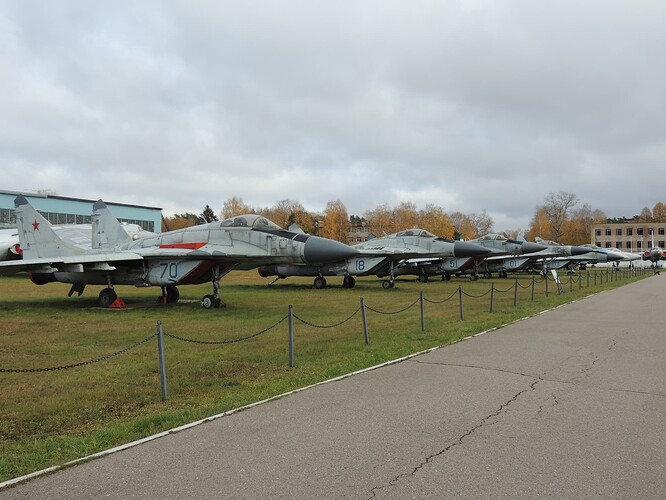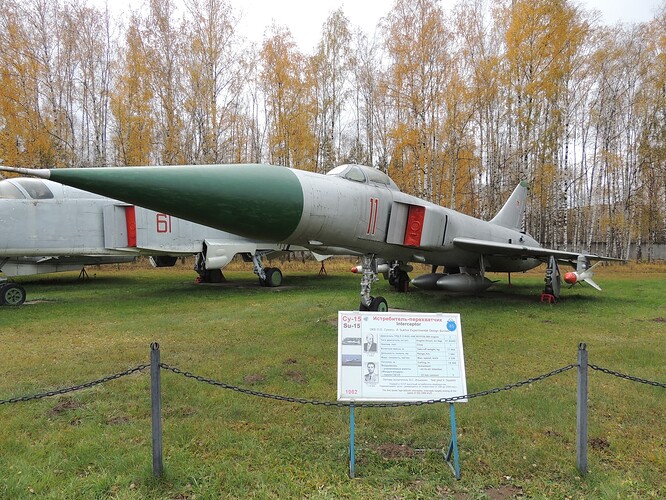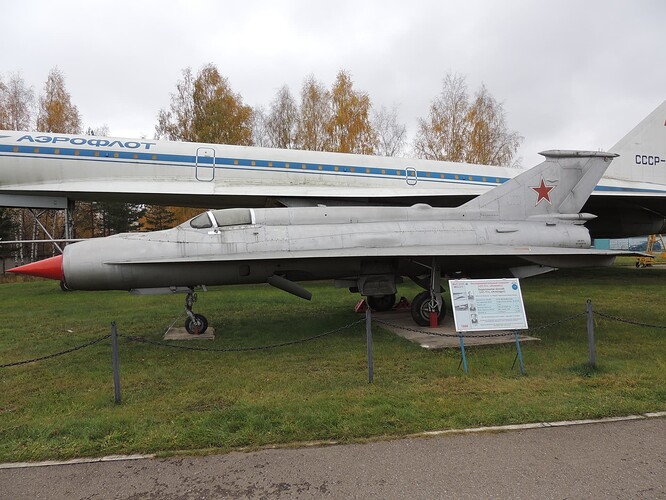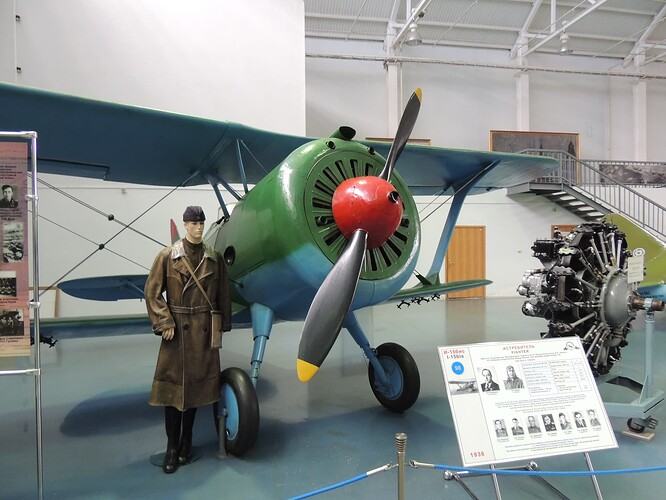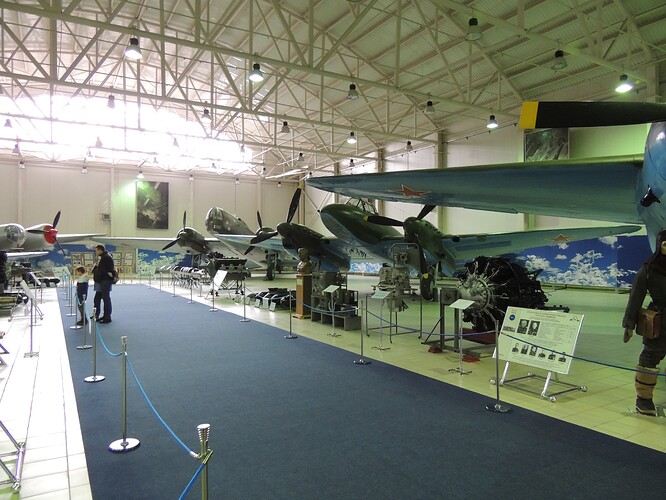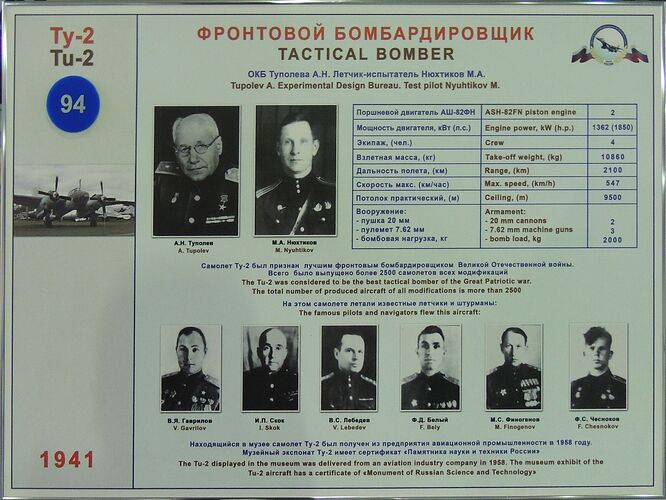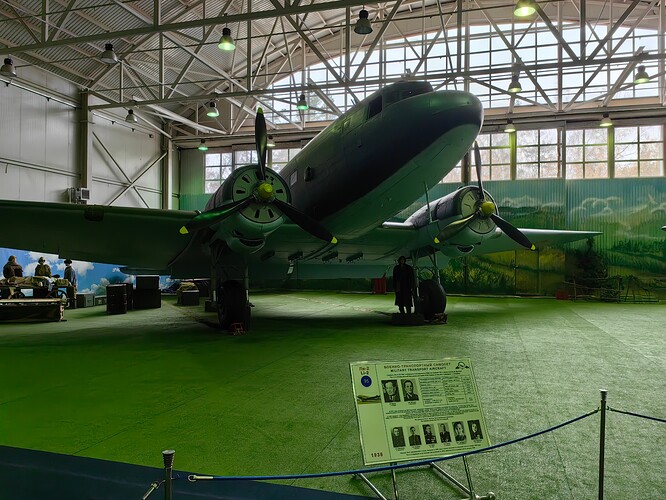In history and in this museum, the Tu-16 is followed by the Tu-22.
The plane attracts attention with its unusual engine arrangement. And this, as I understand it, was one of the reasons for its modernization. The initiative in this came from Tupolev himself, and here, once again, his non-design talent was revealed. Because what happened as a result is not a modernization at all, but a completely different aircraft.
This can be seen with the naked eye, plus I had to read that only the front landing gear and the bomb bay flap remained unchanged from the original model.
With true modernization, much remains in place. At a minimum, general outlines and familiar appearance. That’s how it is with this modification, indeed.
There are two Myasishchev Design Bureau aircraft on the site. One of them, like the previous Tu-22M3, is not very accessible for viewing.
The only saving grace is that this is a very close relative of the M-4 aircraft installed in Verkhnyaya Pyshma, where it is more accessible for inspection.
But the second plane is exactly what the word “rocket plane” represents for me, no matter what it actually means. This is the plane from those futuristic pictures in a popular science magazine that I looked at with lust in my school childhood.
If we add to this that there is a couple standing next to each other from whom it is impossible to take your eyes off,
then it becomes clear that I spent a lot of time there.
Yes, the plane completed only 10 flights and did not reach the stated speed of Mach 3. Yes, its further development was stopped in favor of the Tu-160 (it is quite possible that it was not Tupolev’s design talent that played a role here). Yes, it is called the “Russian Valkyrie”, and it is indeed extremely similar to the American XB-70 Valkyrie. But how the tarnish from welding on its titanium planes shimmers in the sun!
And, completely off topic, but there’s nowhere else to put it.
Well, this is a fighter, but with a take-off weight twice that of the Il-28 bomber!









